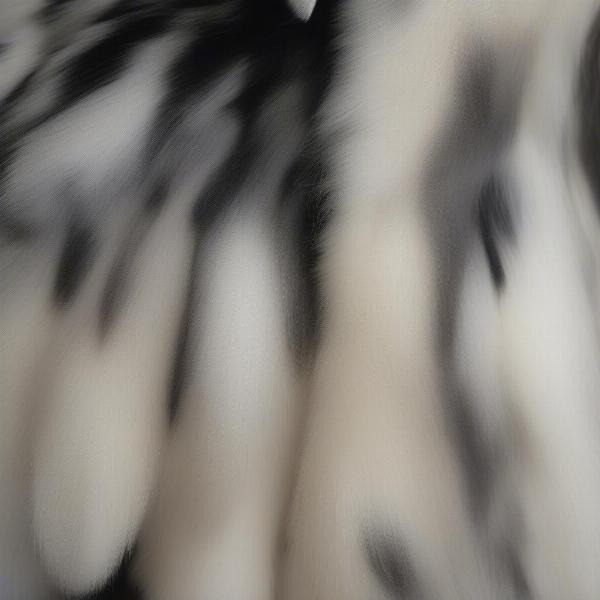The term “aurora dog” doesn’t refer to a specific breed. It’s often used online to describe dogs with striking, multi-colored coats, reminiscent of the Northern Lights, or Aurora Borealis. While there’s no official “aurora dog” breed, certain breeds and mixes are more likely to exhibit this captivating coloration. This article will explore the concept of the “aurora dog,” discussing breeds that often display these beautiful coat patterns, the genetics behind them, and how to care for a dog with a unique and vibrant coat.
Breeds Often Associated with “Aurora Dog” Appearance
Several breeds are known for their varied and striking coat colors that might be described as “aurora-like.” These include:
- Australian Shepherd: Known for their merle gene, Australian Shepherds can display a range of colors, including blue merle, red merle, and even tri-color patterns, often with patches of white and tan. This breed’s coat can create a stunning visual effect similar to the aurora.
- Siberian Husky: While often associated with classic black and white or gray and white markings, Siberian Huskies also come in other striking colors like red and white, agouti, and even sable, sometimes resulting in a blended appearance resembling the Northern Lights.
- Alaskan Malamute: Similar to Huskies, Malamutes also boast diverse coat colors and patterns. Their thick, double coat can exhibit various shades, including gray, black, sable, and red, often combined with white markings.
Other breeds, such as the Cardigan Welsh Corgi and the Shetland Sheepdog, also carry the merle gene and can exhibit stunning, multi-colored coats. Mixed breeds can inherit these color patterns from their parent breeds, further diversifying the “aurora dog” look.
The Genetics of “Aurora” Coat Coloration
The mesmerizing coat patterns often associated with the “aurora dog” are largely due to the merle gene. This gene causes irregular patches of diluted pigment, resulting in a mottled appearance. Merle can appear in various colors, such as blue merle (diluted black), red merle (diluted liver/brown), and even sable merle.
 Merle Gene in Dog Coat Patterns
Merle Gene in Dog Coat Patterns
It’s important to note that breeding two merle dogs together increases the risk of health problems in their offspring, including deafness and blindness. Responsible breeders are aware of these risks and avoid such pairings.
Caring for an “Aurora Dog”
Caring for a dog with an “aurora-like” coat is similar to caring for any other dog, with a few considerations:
- Regular Grooming: Depending on the breed and coat type, regular brushing is essential to prevent matting and keep the coat healthy and shiny.
- Sun Protection: Dogs with lighter coat colors, particularly merle dogs, can be more susceptible to sunburn. Providing shade during peak sun hours and using pet-safe sunscreen can help protect their skin.
- Health Monitoring: As mentioned earlier, the merle gene can be associated with certain health issues. Regular veterinary check-ups and awareness of potential problems are crucial for maintaining the well-being of a merle dog.
Conclusion
While the “aurora dog” isn’t a recognized breed, the term captures the enchanting beauty of dogs with vibrant, multi-colored coats. Understanding the genetics and specific needs of breeds that commonly exhibit this coloration will help owners provide the best possible care for their unique companions.
FAQ
- What is an aurora dog? “Aurora dog” is a descriptive term for dogs with coats resembling the Aurora Borealis, often due to the merle gene.
- Are there any health concerns associated with the “aurora” coat? The merle gene can be linked to health issues like deafness and blindness, especially when two merle dogs are bred together.
- How do I care for a dog with a multi-colored coat? Regular grooming, sun protection, and routine veterinary check-ups are essential.
- What breeds are commonly associated with the “aurora” look? Australian Shepherds, Siberian Huskies, and Alaskan Malamutes are a few examples.
- Is it safe to breed two merle dogs together? No, breeding two merle dogs significantly increases the risk of health problems in the puppies.
feminine dog names
dog names for weimaraners
beagle stuffed dog
stuffed chihuahua dog
ILM Dog is your trusted international resource for expert advice on dog care and breeding. We offer comprehensive guidance on breed selection, health and wellness, training, nutrition, and much more. From puppy care to senior dog support, ILM Dog provides valuable insights and resources for dog owners worldwide. Contact us for personalized support at [email protected] or +44 20-3965-8624. Connect with ILM Dog today!